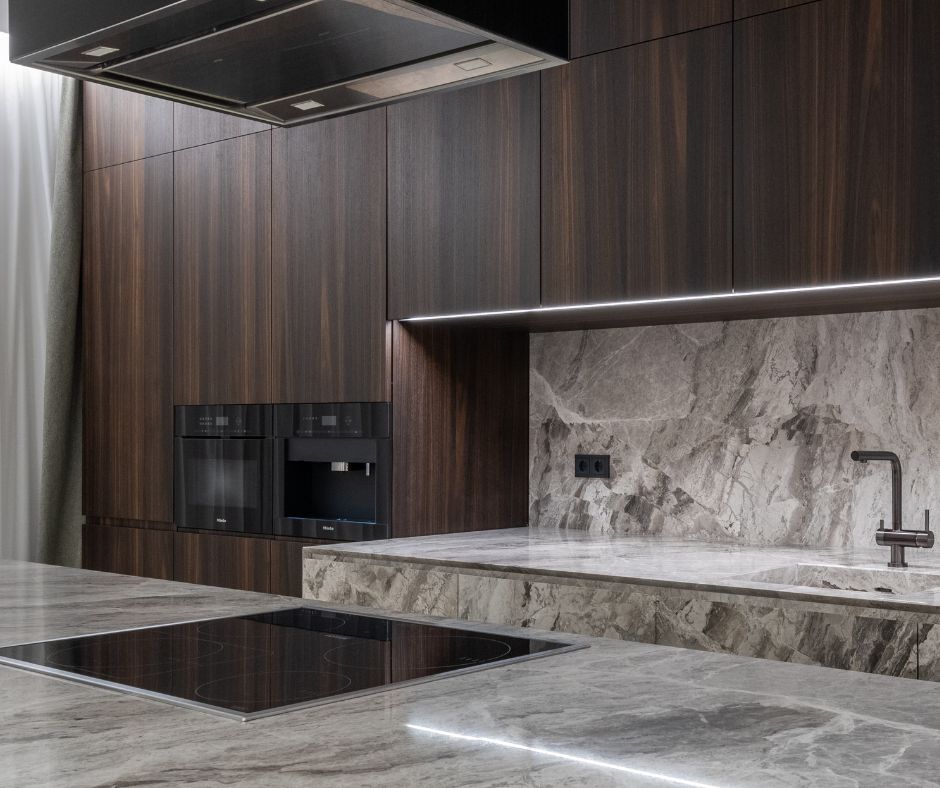Innovative kitchens are at the forefront of shaping new culinary traditions and practices, significantly enhancing the overall cooking experience. While induction cooking technology may seem like a modern breakthrough, its origins trace back to the early 20th century. The initial demonstrations in the 1930s captivated audiences, illustrating the remarkable ability to boil water using magnetic energy without any visible heat source. Nonetheless, it is only in recent decades, propelled by significant advancements in technology, efficiency, and design, that induction cooktops have solidified their place in contemporary kitchens, revolutionising the way meals are prepared and savoured.
Today, an increasing number of home chefs and culinary enthusiasts are embracing induction cooking for its extraordinary blend of sleek aesthetics, exceptional precision, and unmatched energy efficiency. This groundbreaking cooking method not only accelerates meal preparation but also transforms the art of home cooking, merging the science of heat management with culinary creativity in every dish crafted on its elegant, polished surface. With the ideal induction cooktop, you can achieve cooking speeds that rival those of a microwave, allowing you to create delightful family meals in record time!
Unlocking the Full Potential of Flavour and Nutrition Through Precision Cooking Techniques
In contrast to traditional gas or electric ranges, induction cooktops directly heat cookware using electromagnetic energy. This revolutionary technique eradicates wasted heat, prevents burnt edges, and provides exceptional control over both low and high temperatures. When you can manage heat with such meticulous precision, your ingredients retain more of their natural moisture, flavour, and nutritional integrity. Whether you are quickly flash-searing proteins, gently simmering sauces, or swiftly blanching vegetables, induction cooking makes achieving perfect results an effortless endeavour, consistently avoiding overcooked meals and the degradation of essential nutrients.
Sleek and Stylish Induction Cooktops: Maximising Space While Minimising Stress
In kitchens where every square centimetre is valuable, induction cooktops shine not only in performance but also in aesthetic appeal. Their flat, smooth surfaces integrate seamlessly into your countertop, contributing to a minimalist aesthetic that creates additional space for food preparation, plating, or even casual dining experiences.
In contrast to traditional gas hobs, which are often bulky and laden with grates and protruding burners, induction cooktops sit flush with the countertop surface. While ceramic stovetops may present a sleeker appearance, they often remain dangerously hot long after cooking has concluded.
By comparison, induction surfaces cool down rapidly once the cookware is removed. The heat is generated through the magnetic interaction between the cooktop and the cookware, rather than by the cooktop itself, meaning that the glass surface retains significantly less heat. This feature not only makes cleaning safer and easier but also creates a more secure environment while cooking, which is particularly advantageous for households with children or pets who may be curious about kitchen surfaces.
The overall result? A cooler kitchen with cleaner lines and increased flexibility—perfect for modern cooks who appreciate both form and function in their culinary spaces.

Essential Guide to Selecting the Perfect Cookware for Induction Cooking
Transitioning to induction cooking may come with a bittersweet realisation—you might need to part ways with some cherished old pans. Since induction technology operates using magnetic energy for heat generation, not all cookware will be compatible with this method.
In order for cookware to work effectively on an induction cooktop, it must be made from ferrous (magnetic) metals, such as cast iron, carbon steel, or magnetic-grade stainless steel. A straightforward test using a fridge magnet can determine compatibility: simply place a magnet on the bottom of the pan. If it adheres firmly, you’re set to go.
When selecting new cookware, opt for pans with a heavy, flat base. This design ensures optimal contact with the cooktop, delivering even heat distribution, which is crucial for achieving perfect browning, tender roasts, and crispy edges. Furthermore, high-quality induction cookware is designed to resist warping over time, ensuring consistent cooking performance for every meal prepared.
Although it may be challenging to bid farewell to beloved old favourites, consider it an upgrade. In return, you gain enhanced control, faster cooking times, and dishes that showcase even richer flavours and textures.
Induction Cookware Quick Checklist: Must-Have Items for Successful Cooking
 Conduct a fridge magnet test—strong adhesion indicates induction compatibility
Conduct a fridge magnet test—strong adhesion indicates induction compatibility Prefer flat-bottom pans to ensure optimal contact and heat distribution
Prefer flat-bottom pans to ensure optimal contact and heat distribution Select cast iron, carbon steel, or magnetic stainless steel cookware
Select cast iron, carbon steel, or magnetic stainless steel cookware Avoid cookware made solely from copper, aluminium, or glass unless explicitly marked for induction use
Avoid cookware made solely from copper, aluminium, or glass unless explicitly marked for induction use Look for the induction symbol (resembling a horizontal coil or a series of loops) stamped on the base or packaging
Look for the induction symbol (resembling a horizontal coil or a series of loops) stamped on the base or packaging
Pro Tip: The induction symbol often resembles a zigzag or spring coil graphic. Spotting it guarantees cookware compatibility.
Crucial Installation Considerations for Your Induction Cooktop
Before embarking on your culinary adventure with your new cooktop, several critical installation essentials must be prioritised:
-
Professional Installation Is Essential: Induction units frequently require dedicated electrical circuits and specific clearances. Ensure you engage professionals who understand these requirements for optimal setup.
-
Hire a Licensed Electrician: Wiring a high-powered induction cooktop is not a DIY task.
Discover why hiring a qualified electrician is imperative to ensure safety and compliance. -
Verify Your Power Setup: Some induction models consume considerable power. Before making a purchase, confirm that your wiring meets the cooktop’s specifications to avoid complications.
Proper installation not only guarantees optimal performance but also ensures safety and longevity of your induction cooktop, providing peace of mind as you create culinary masterpieces.
Key Benefits of Embracing Induction Cooking
Induction cooking offers more than mere speed or safety—it’s inherently intelligent. With the right cookware and a professionally installed system, you can consistently achieve better tasting meals, richer textures, and healthier options, meal after meal. In contemporary kitchens, precision cooking has transitioned from being a preference to becoming the new standard that many home cooks aspire to attain.
Frequently Asked Questions About Induction Cooktops and Their Benefits
1. What Sets Induction Cooktops Apart from Gas or Electric Alternatives?
Induction cooktops provide immediate heat control, enhanced energy efficiency, and improved safety features. Since they heat the cookware directly, meals cook more rapidly with reduced energy waste, while the surfaces remain cooler, significantly diminishing the risk of burns.
2. Can I Continue to Use My Current Pots and Pans on an Induction Cooktop?
You can use your existing cookware only if it is magnetic. Cookware crafted from cast iron or magnetic stainless steel is ideal for induction cooking. You can easily check compatibility by placing a magnet on the base—if it adheres firmly, it is suitable for induction use.
3. Does Induction Cooking Influence the Flavour of Food?
Yes, and in a notably positive manner. Because induction cooking facilitates precise temperature control, you can sear, sauté, or simmer without overheating, thereby preserving the natural flavours, textures, and nutrients far more effectively compared to inconsistent gas or electric heat sources.
4. Is Special Wiring Necessary for an Induction Cooktop Installation?
Most induction cooktops require a dedicated electrical circuit along with specific voltage and amperage configurations. It’s crucial to have a professional electrician evaluate and install your wiring to ensure compliance with safety standards and to guarantee optimal performance.
The post The Secret Ingredient in Modern Kitchens: Induction Cooktops Are Changing the Game appeared first on https://cookinggods.com
The Article Induction Cooktops: The Game-Changer in Modern Kitchens Was Found On https://limitsofstrategy.com
The Article Induction Cooktops Revolutionising Contemporary Kitchens found first on https://electroquench.com

